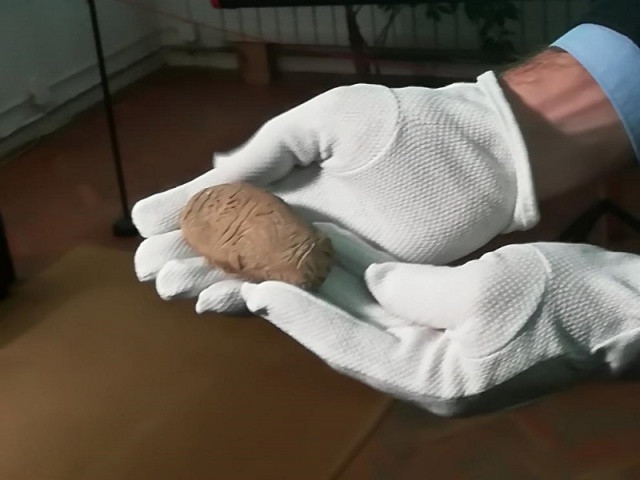Archaeologists have found a 7,000-year-old example of one of the world's earliest writing systems
Bulgarian researchers find ceramic tile featuring inscriptions of a set of symbols known as the Vinča signs.

Archaeologists have discovered a new example of one of the world's earliest writing systems near Nova Zagora, a town in the south-eastern plains of Bulgaria, the Sofia News Agency reports.
In October 2017, researchers from Bulgaria's National History Museum and colleagues found a well-preserved ceramic tile, dating back to the 6<sup>th millennium BC, which features inscriptions of a set of symbols known as the Vinča signs.
"This plate is a high form of information transmission and is very complex," said archaeologist Tanja Kaneva.
The symbols on the plate - which are thought to carry information about calendar and ritual events - are one of the earliest forms of proto-writing in the world, and perhaps the oldest in Europe. They were created by the so-called Vinča culture of central and south-eastern Europe in Neolithic times between the 6<sup>th and 5<sup>th millennia BC.
The first examples of these mysterious symbols were uncovered by Hungarian archaeologists in 1875 near Turdas, in Romania, while further excavations in Serbia near Vinča - a suburb of Belgrade - in 1908 revealed a similar cache.
Since then, thousands of fragments with similar inscriptions have been found across the region, bearing symbols denoting animal-like creatures and abstract signs, such as crosses, swastikas and chevrons.
The oldest of the finds, known as the Tărtăria tablets - which were discovered in 1961 - have been the subject of considerable controversy, in particular, because they date to 5300 BC. Some experts claim this would make them one of the earliest known forms of writing in the world.
However, many experts do not consider the Vinča symbols to be a true writing system - which can be defined as a visual representation of language through an established selection of markings. Instead, most researchers define them as proto-writing (early writing) - a system of glyphs (simplified pictures) which represent objects and concepts, conveying information.
The first true writing systems are widely considered to have emerged in Sumer - now modern-day Iraq - during the 4<sup>th millennium BC and Egypt slightly later (although some scholars say Egyptian hieroglyphs developed before the Sumerian pre-Cuneiform script).
Alongside the ceramic tile, archaeologists also found a variety of artefacts, including sculptures and jewellery, indicating the existence of a prehistoric settlement at the site.





















